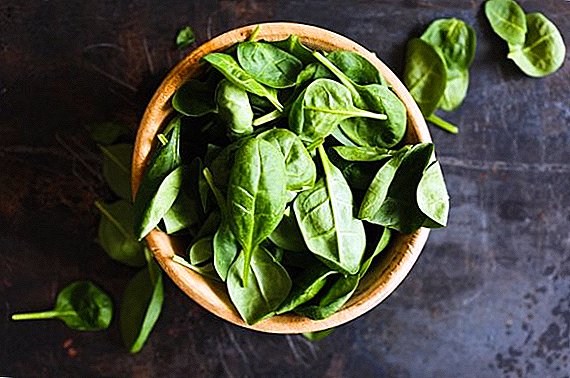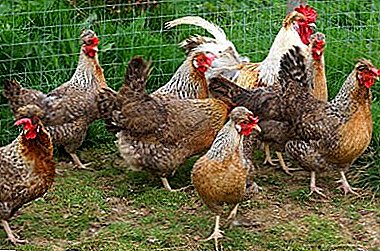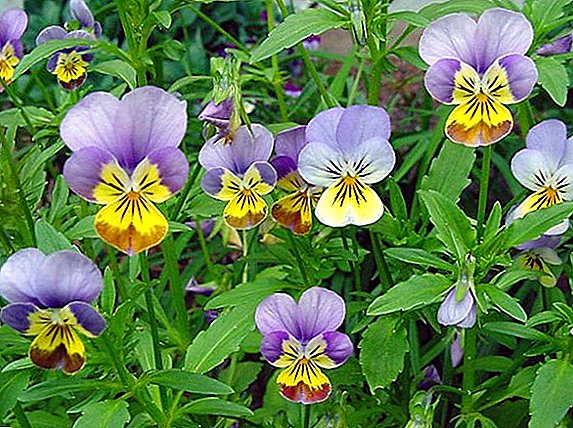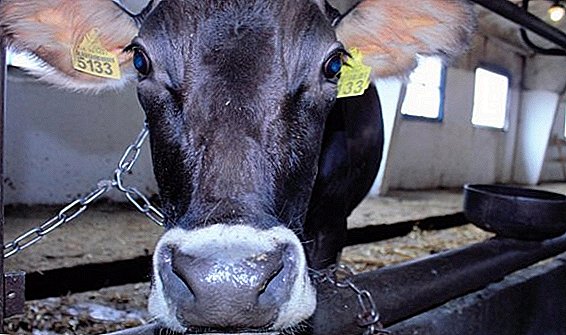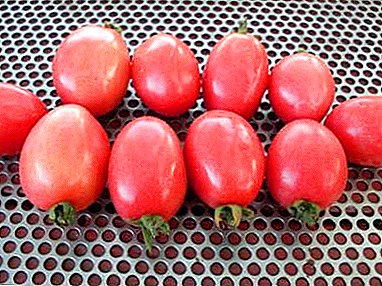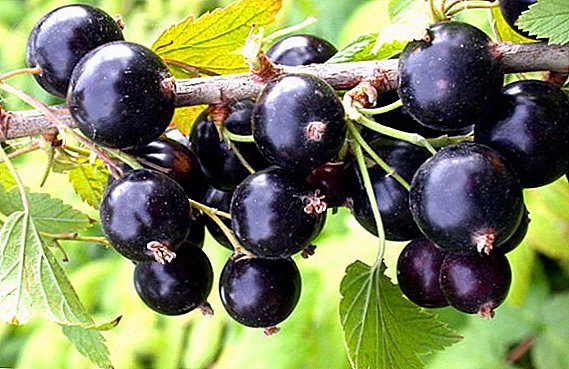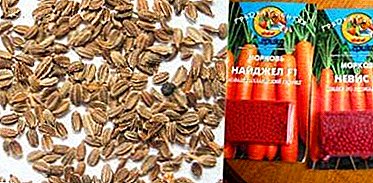 Aglaonema Maria - tropical plant growing in the wild in the Philippines. Thanks to the decorative look, simple in care and maintenance, it is a true decoration of home and office interiors. The article is devoted to the description, features of agrotechnics of a flower at home.
Aglaonema Maria - tropical plant growing in the wild in the Philippines. Thanks to the decorative look, simple in care and maintenance, it is a true decoration of home and office interiors. The article is devoted to the description, features of agrotechnics of a flower at home.
Plant description
Today there are about 50 species and several hundred aglaonem hybrids. The aglaonema Maria (from the Greek. Aglos - bright, nema - thread), the other name of which is the Emerald beauty, due to the bright emerald color of the leaves, earned the greatest popularity in home maintenance. 
Mary is a compact bush, as it has relatively small leaves. The general background of the sheet plate is bright, with a glossy sheen and pronounced dark green stripes along the edges of the sheet. The stem is broad at the base, as the flower grows thicken, "stiffens". It blooms in summer, but not every year. Flower of yellow-green color, pale shade. If pollination occurs, red berries ripen with one seed. The germination period is short, maximum - 8 months.
Important! Aglaonema can be dangerous for children and pets due to caustic juice and poisonous berries.
In addition to Aglaonema Maria, other varieties are popular in home floriculture:
- Red;
- Modest;
- Silver (subspecies: Silver Bay, Silver Quinn, silver-blue);
- Changeable;
- Maria Cristina;
- Maria Anna
Growing conditions
Aglaonema Maria is a perennial slow growing plant. The flower is undemanding to bright light, so it grows well and develops in rooms with a moderate amount of light. 
The main requirements for growing are constant high humidity and heat. Eliminate the possibility of drafts and sudden temperature changes. In the summer months, the temperature should be maintained around + 25 ° С, in winter - not lower than + 15 ° С.
Humidity is supported by regular spraying, in the winter it is at rest, so the number and regularity of spraying should be reduced. Leaves should be wiped clean with a damp cloth to avoid dust accumulation. Soil in the pot should always remain wet.
Important! Aglaonema Maria is sensitive to tobacco smoke, so do not keep the flower in the room where they smoke.
Home Care Rules
Caring for aglaonema involves timely watering and feeding, the formation of the bush, transplant, preventive or therapeutic measures to combat diseases and pests.
Watering and fertilizing
Watering should be abundant and regular, use filtered water or rain at room temperature. Half an hour after irrigation, it is necessary to drain the excess water from the pallet in which the pot is located. When the temperature in the room decreases, the frequency of irrigation is reduced, while ensuring that the soil does not dry out.
During the growing season (March-August), fertilizers are applied 1 time in 14 days, alternating organic supplements with mineral ones. In the autumn months, the number and amount of nutrients must be reduced, and in the period of complete rest (winter) additional feeding is not carried out. It should be noted that aglaonema does not tolerate lime fertilizers.

Pruning
The flower is slowly growing, the growth of leaves - 5-6 pcs. in year. Over time, the lower leaves dry out, the stem is drawn out and, as a result, the decorative effect decreases. Pruning a bush will help rejuvenate and properly form a bush.
To give "bushiness" cut the tip, affecting a few centimeters of the stem with leaves, while trying not to disturb the geometry of the plant. Cut stem can be used to grow a new flower. Removal of old, affected leaves will have a beneficial effect on the development of a new growth - they will become more durable and shiny.
Do not forget that the most favorable period for the rejuvenation of a home plant is spring.
Did you know? In the film "Leon" (France, 1994), the main character, played by Jean Reno, took care of his favorite indoor flower - aglaonema.
Transfer
The optimal time for transplanting aglaonema is May.
In the process of transfer to another planting capacity, as a rule, the bush is divided, highlighting the stronger young shoots. The plant has a superficial fibrous root system, therefore it is recommended not to use deep pots.
Soil, it is desirable to use a special, suitable for this type. It is possible to build an earthen mixture at home, observing the following proportions: peat - 1 part, sand - 1 part, ground sheet - 2 parts and a small amount of charcoal. The prepared soil should be permeable, with good drainage at the bottom of the tank (a layer of pebbles, expanded clay, clay fragments).
After transplantation, the flower is kept in a warm room so that the air temperature does not fall below + 20 ° C. 
Breeding
The plant can be propagated by dividing the bush, as well as cuttings and seeds.
Dividing bush
The method is suitable for breeding perennial, large plants.
Algorithm of actions:
- Carefully remove the bush from the pot.
- Carefully shake off the old soil, wash the roots in warm water.
- Young strong shoots with a well-formed root system are separated from the "old" plant with a knife or sharp scissors.
- Powder from activated charcoal powders cut and immediately planted in a prepared pot.
- Abundantly watered.
- The transplanted flower is left in a warm place for 7 days. Do not forget to constantly humidify the air around it.
- When a young sheet appears, aglaoneme is put on a permanent place.
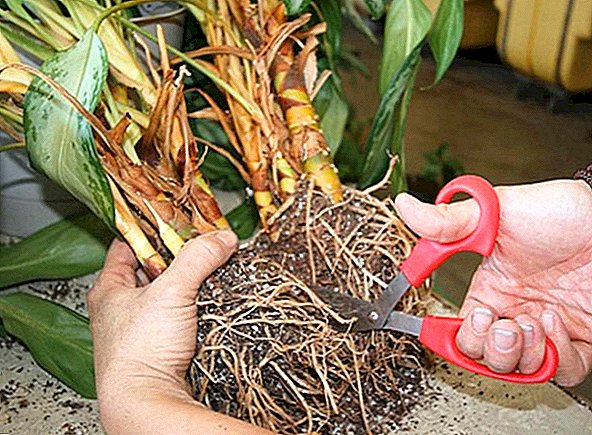
Cuttings
The cuttings can be lateral and apical shoots, parts of a bare trunk with points of growth. The length of the cutting should be at least 5 cm, preferably the presence of a leaf on the cutting.
The most favorable period is March-April. If necessary - all year round.
Main steps:
- Cuts of parts of plants used as cuttings, powdered with powdered activated carbon and left for a day. During this time, the slices should dry out.
- In the prepared moist soil deepen the stalk.
- Cover the stalk together with a plastic bag and place in a well-heated, bright place.
- The soil must be constantly moistened, and the "greenhouse" several times a day must be aired.
- After about 4 weeks, roots appear.
- Apical stalk and lateral shoots can be rooted using an aqueous solution of "Zircon" or "Appin". Parts of the plant are placed in a solution and placed in a warm and bright place, changing the solution every 3-4 days, preventing water from blooming. After the appearance of the first roots, the plant is planted in a container with soil.

Seeds
When the seed propagation method of Mary aglaonema keep in mind that plants grown in this way will grow slowly, and varietal characteristics may not be preserved.
Suitable for planting seeds are easily separated from the berries. The germination period is limited, so the planting should be carried out immediately after the separation of the seeds.
Planting technology:
- Planting mixture (river sand, peat, sphagnum) fill flat containers. Well moisten the soil.
- Seeds deepen no more than 1.5 cm into the ground.
- They create greenhouse conditions - covered with plastic film or glass on top.
- Spray the soil abundantly with a spray bottle every three days.
- Approximately 90 days later shoots appear. It should be remembered about the uneven germination of seeds of this plant.
- After the appearance of the first sheets, aglaonem is transplanted into a permanent pot.
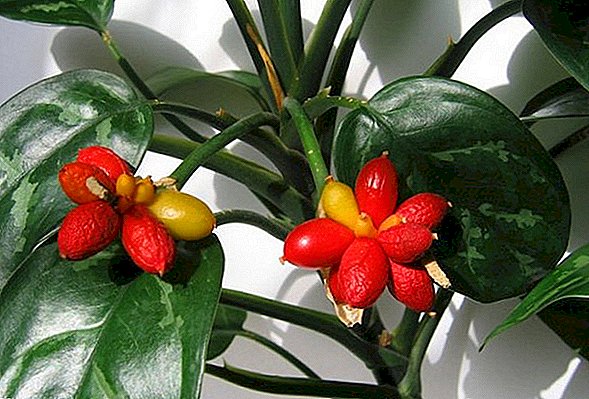
Diseases and pests
Aglaonema Maria can be exposed to harmful insects (aphid, thrips, spider mite, worm). A signal about this will serve as spots on the leaf plates, yellowing. If the number of pests is insignificant, treatment with soap and a rich shower will help. If the process has gone far, the plants should be treated with fungicides (karbofosom), while strictly following the dosage and rules of use of the tool.
With too much watering home flower gets fungal diseases - gray rot. Affected leaves are removed. Improper watering can cause the death of the plant.
Did you know? The leaves of aglaonema release into the environment phytoncides, which are detrimental to pathogenic microbes. Also, the plant neutralizes formaldehyde in the air.
Spectacular, bright green plant, of course, is the decoration of the apartment or office. With the observance of simple rules of care and the correct temperature regime, Maria Aglaonema will enjoy for a long time decorative and benefit - to purify the air.





